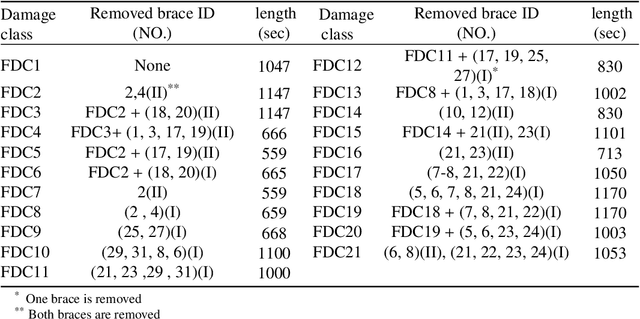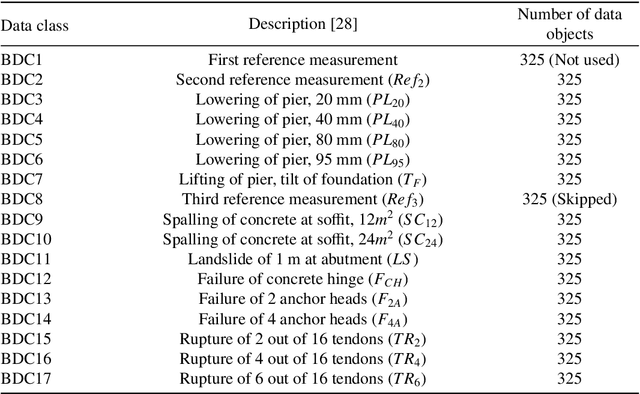Kourosh Nasrollahzadeh
Zero-Shot Transfer Learning for Structural Health Monitoring using Generative Adversarial Networks and Spectral Mapping
Dec 07, 2022Abstract:Gathering properly labelled, adequately rich, and case-specific data for successfully training a data-driven or hybrid model for structural health monitoring (SHM) applications is a challenging task. We posit that a Transfer Learning (TL) method that utilizes available data in any relevant source domain and directly applies to the target domain through domain adaptation can provide substantial remedies to address this issue. Accordingly, we present a novel TL method that differentiates between the source's no-damage and damage cases and utilizes a domain adaptation (DA) technique. The DA module transfers the accumulated knowledge in contrasting no-damage and damage cases in the source domain to the target domain, given only the target's no-damage case. High-dimensional features allow employing signal processing domain knowledge to devise a generalizable DA approach. The Generative Adversarial Network (GAN) architecture is adopted for learning since its optimization process accommodates high-dimensional inputs in a zero-shot setting. At the same time, its training objective conforms seamlessly with the case of no-damage and damage data in SHM since its discriminator network differentiates between real (no damage) and fake (possibly unseen damage) data. An extensive set of experimental results demonstrates the method's success in transferring knowledge on differences between no-damage and damage cases across three strongly heterogeneous independent target structures. The area under the Receiver Operating Characteristics curves (Area Under the Curve - AUC) is used to evaluate the differentiation between no-damage and damage cases in the target domain, reaching values as high as 0.95. With no-damage and damage cases discerned from each other, zero-shot structural damage detection is carried out. The mean F1 scores for all damages in the three independent datasets are 0.978, 0.992, and 0.975.
System-reliability based multi-ensemble of GAN and one-class joint Gaussian distributions for unsupervised real-time structural health monitoring
Feb 01, 2021



Abstract:Unsupervised health monitoring has gained much attention in the last decade as the most practical real-time structural health monitoring (SHM) approach. Among the proposed unsupervised techniques in the literature, there are still obstacles to robust and real-time health monitoring. These barriers include loss of information from dimensionality reduction in feature extraction steps, case-dependency of those steps, lack of a dynamic clustering, and detection results' sensitivity to user-defined parameters. This study introduces an unsupervised real-time SHM method with a mixture of low- and high-dimensional features without a case-dependent extraction scheme. Both features are used to train multi-ensembles of Generative Adversarial Networks (GAN) and one-class joint Gaussian distribution models (1-CG). A novelty detection system of limit-state functions based on GAN and 1-CG models' detection scores is constructed. The Resistance of those limit-state functions (detection thresholds) is tuned to user-defined parameters with the GAN-generated data objects by employing the Monte Carlo histogram sampling through a reliability-based analysis. The tuning makes the method robust to user-defined parameters, which is crucial as there is no rule for selecting those parameters in a real-time SHM. The proposed novelty detection framework is applied to two standard SHM datasets to illustrate its generalizability: Yellow Frame (twenty damage classes) and Z24 Bridge (fifteen damage classes). All different damage categories are identified with low sensitivity to the initial choice of user-defined parameters with both introduced dynamic and static baseline approaches with few or no false alarms.
 Add to Chrome
Add to Chrome Add to Firefox
Add to Firefox Add to Edge
Add to Edge